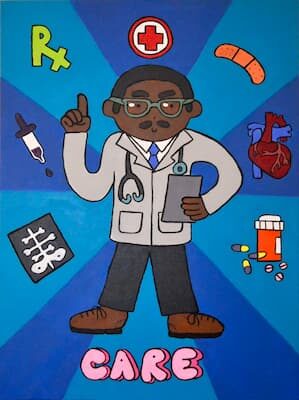Amputations can be a life-changing event for a Worker. Workers may lose their ability to perform their job as well as perform activities of daily living.
The Workers’ Compensation Community is concerned about amputation cases as they involve extensive medical costs and missed time from work.
This article will discuss amputations, special laws concerning amputations, and interesting data derived from a recent study.
What Is an Amputation?
The Workers’ Compensation Appeals Board defined amputation. In Cruz vs. Mercedes Benz, 72 C.C.C. 1281 (Panel Decision), the WCAB indicated “ Defining amputation as the severance or removal of a limb, part of a limb, or other body appendage comports with the ordinary meaning, and includes the range of potentially compensable scenarios, including both traumatic loss of a body part in an industrial injury and surgical removal during treatment. This definition conforms to our understanding of the common meaning of the term “amputation,” which encompasses external projecting body parts, not internal parts, even if they include bone. It is also consistent with the definitions in the International Dictionary of Medicine and Biology, Dorland’s Illustrated Medical Dictionary, and Stedman’s Medical Dictionary. To the extent that some definitions refer to organs, appear to encompass all body parts, or include an equivocal “etc.,” we reject them or interpret them in a manner consistent with our understanding of the term “amputation.”
Thus, surgery on a lumbar disc was found not to constitute an amputation.
Why Is an Amputation Important in California Workers’ Compensation?
An amputation in a workers’ compensation case triggers entitlement to additional periods of total temporary disability. 240 weeks is allowed in the case of amputations. Labor Code Section 4656. In these cases, there is no requirement that the temporary disability period be connected to the amputation. Jon Van Ness, Applicant v. Barbara Herzstein, 2007 Cal. Wrk. Comp. P.D. LEXIS 239 (Panel Decision)
How Do Amputations Occur on an Industrial Basis?
Occupationally related amputations can occur for many reasons. The accident itself can be the source of the amputation, i.e. a skill saw cutting off a finger. They can result of a crush injury which necessitates an amputation. They can be the result of post-surgical infection. They can be the result of an industrially related disease process such as diabetes.
Interesting Amputation Facts Are:
Males vs. Females
Men sustain most of the work-related amputations. (84.8%) Gomez NG, Gaspar FW, Thiese MS, Merryweather AS. Trends in incidence and correlation between medical costs and lost workdays for work-related amputations in the State of California from 2007 to 2018. Health Sci Rep. 2021 Jul 1;4(3):e319. doi: 10.1002/hsr2.319. PMID: 34250271; PMCID: PMC8247939.
Full-Time vs. Part-Time Employees
Full-Time Employees were more likely to sustain amputation versus Part-Time Workers. (71.7%.) Supra.
Most Amputated Parts
Most claims consisted of partial-hand amputations (82.0%). Most of those were partial-hand amputations, 66.7% were fingers without the loss of the thumb. Following partial-hand amputations, partial-foot amputations were the next most common claim at 5.9%. Supra.
Type of Business
Manufacturing is the industry with the highest number of claims (24.1%.) Supra.
What Should an Injured Worker Take from This Study?
The study noted that “[a]mputations represent high medical costs and number of lost workdays.” Gomez NG, Gaspar FW, Thiese MS, Merryweather AS. Trends in incidence and correlation between medical costs and lost workdays for work-related amputations in the State of California from 2007 to 2018. Health Sci Rep. 2021 Jul 1;4(3):e319. doi: 10.1002/hsr2.319. PMID: 34250271; PMCID: PMC8247939.
Due to the increased medical expense and missed time from work, Insurance Companies will make efforts to control the costs. They may do so by employing a Defense Counsel as well as a Nurse Case Manager.
What If I Need Advice?
If you would like a free consultation regarding workers’ compensation, please contact the Law Offices of Edward J. Singer, a Professional Law Corporation. We have been helping people in Central and Southern California deal with their workers’ compensation cases for over 27 years. Contact us today for more information.




